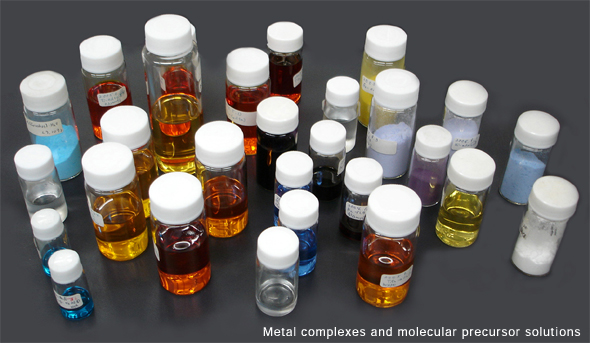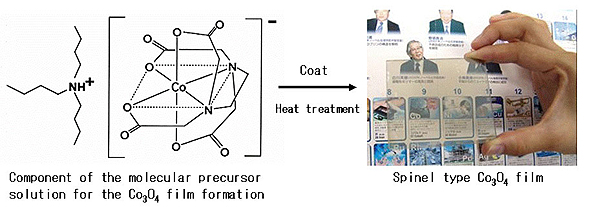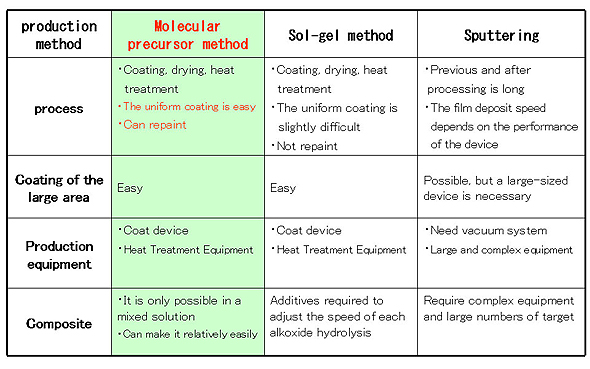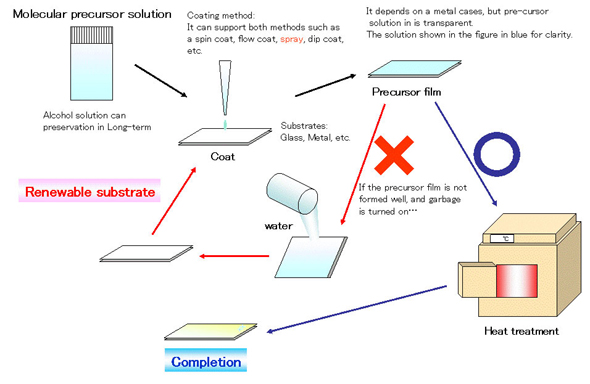Molecular precursor solutions can facilitate the development of new materials
Compared to sol-gel solutions, molecular precursor solutions are known to possess high durability, good miscibility, and good handling ability, and obtaining homogeneous solutions using many inorganic materials is easy, thus facilitating the fabrication of new materials with different properties.

Introduction to molecular precursor solutions
A molecular precursor solution is synthesized by dissolving special metal complex salts in alcohol. Due to its high durability, good miscibility, and handling ability, this solution can be directly coated on the substrate surface. This solution can be coated by spinning, dipping, or spraying on any material surface to form composite thin films. If the precursor film is not evenly distributed on the substrate surface, the precursor solution can be easily washed off with water before heat-treating and the substrate can subsequently be recycled. Unlike the sol-gel method, the molecular precursor method does not necessarily need to undergo a chemical reaction such as hydrolysis of alkoxides during fabrication.

This method uses an inexpensive versatile "metal complex," which can be applied to a variety of metals and can form a thin film with metal oxides such as zirconia and titania.
Currently, we are the only Japanese company that holds a manufacturing license for molecular precursor solutions.
Applications
Photocatalyst transparence films, Protective films (heat resistant, noncorrosive), Ferroelectric materials, Superconductor materials, Solar battery materials, Transparence conductive films, Heat ray reflection films, Biomaterials, Light-controlled optoelectronics, etc.
Comparison of coating method characteristics
Wet process coating is simpler than dry process coating, such as sputtering. Therefore, large-area substrate application is easy and inexpensive.
Typical coating processes
Molecular precursor films on substrates can be rinsed off with water before heat treatment. This allows substrate reuse and contributes to yield improvement. Glass, metal, ceramics, and heat resistant materials can be used.


